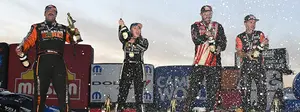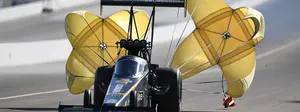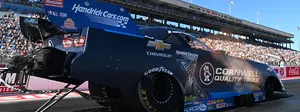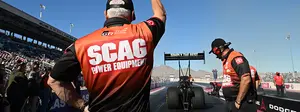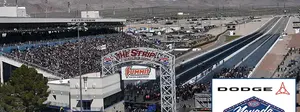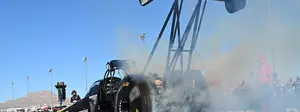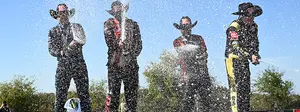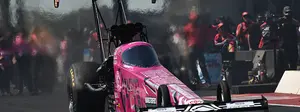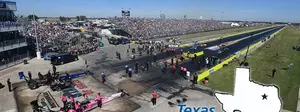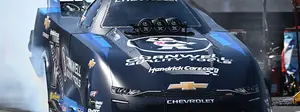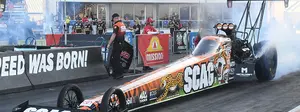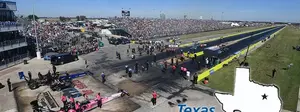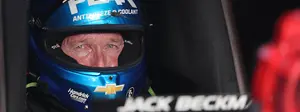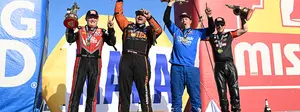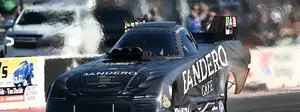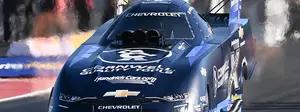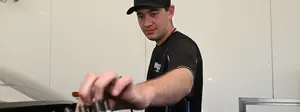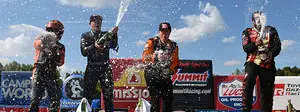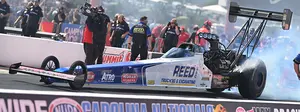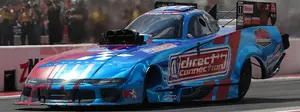

Antron Brown: Looking back while still looking ahead
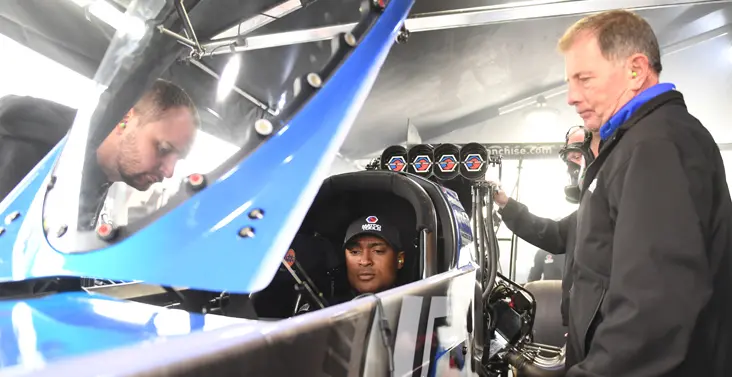
The day before he saddled up in the Matco Tools dragster for his first qualifying run of the NGK Spark Plugs NHRA Four-Wide Nationals marked the 20-year anniversary of Antron Brown’s first career win.
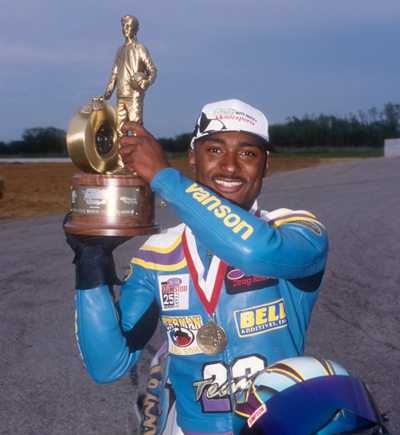
Brown’s breakthrough win came April 25, 1999, at Texas Motorplex where he rode the Team 23 Suzuki owned by his cousin, NFL cornerback Troy Vincent, to victory. Sixty-five wins later, Brown is able to reflect on that moment and how it sowed the seeds for what has become a hall of fame career.
“Back then, man, there were no worries in the world, no expectations as a team or anything,” he said, his eyes going a little glassy at the memory. “We were new and fresh and green.
“You never realize where you’re going to be. You’re racing day to day and just happy to be there. To win was a bonus. We certainly weren’t expecting it. The year before, we didn’t have the power, so if we won any rounds, it was on holeshots. In 1999, we got on the Vance & Hines program and had the power to outrun people, too.
“It feels like yesterday to me. Never in a million years did I expect to still be here 20 years later. If you had told me, ‘A.B., you’ll be part of a great team and you’ll win more than 50 Top Fuel races and three championships,’ I would have said, ‘Who are you kidding? Right. Whatever.’
“One thing I’ve learned is that you don’t one day for granted; you work hard each and every day. I think that’s why the 20 years have gone by so fast. I never rested. I always saw it as a privilege to be out here. I think that’s a big part of it. Plus, I’ve been blessed to be surrounded by the right people to make it happen.”
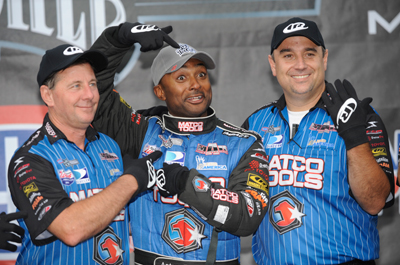
That includes David Powers, who gave him his start in Top Fuel in 2008, and Mike Ashley, who took over the team in 2009, a team that already included tuners Brian Corradi and Mark Oswald, who later would guide Brown to his championships under the Don Schumacher Racing umbrella.
“David Powers was an awesome team owner, but then the housing market crashed and then I raced with Mike Ashley for a year. Mike was amazing, I’ve never been next to a guy who was so positive and inspiration in my entire life. When things were down, he found a way to keep you motivated and to be the best version of yourself every day. When you have someone like that behind you, he built something special in me."
Brown joined the DSR team in 2010 and, with the backbone of a strong team with a tradition of excellence, two years later he was a world champion and has earned 42 of his 66 wins with the team, but the winning pace has slowed. After winning seven times each season en route to second and third season titles in 2015 and ’16 and four wins in 17, they won just once last year due to a combination of problems, including the loss of Corradi to the rival John Force Racing team.
“Last year, we lost Brian so Brad [Mason] had to move up to fill that spot and Mark all of the sudden has all of these responsibilities of overseeing the crew on top of tuning the car The guy who did our cylinder heads became the car chief, doing what Brad was doing, overlooking the car. We were training people in new positions.
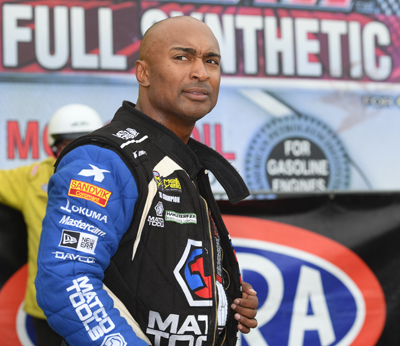
“Then we had a cylinder-head issue that was causing us to blow engines in the dragsters and Funny Cars. It was causing the valves to not seat right and get stuck up in the port. It was a machining error in the shop and we didn’t find [the cause] until the Chicago race last year, but that was the only head we had that was [NHRA-] approved, so we had to band-aid it to get through the season until we could get a new head approved, and we’re just getting that head now. So not only were we trying to get some synergy with guys in different positions, but we’re fighting gremlins and parts issues that we’d never faced before. We were up and down and all around, but we held our poise and grew from it.
“The biggest thing was that we always got stronger from the downs,” he said. “Our car has gone down the track the last seven [of the last eight] runs and we’re working on it to be better every time. When we get those heads, we can start leaning on our packages. Our car runs as good as anyone else from 330 [feet] to the end of the track; once we get that 330 number to where we want it, it’s going to be a gamechanger. The other teams are going to be in trouble.
"We’re working hard on that; we’d like to pick up a hundredth, a hundredth and a half to 60 feet and two- or three-hundredths to 330. When we put momentum to what we already have, it’s going to make the rest of those numbers to the finish line even better and we’re going to be ahead of the game.”























